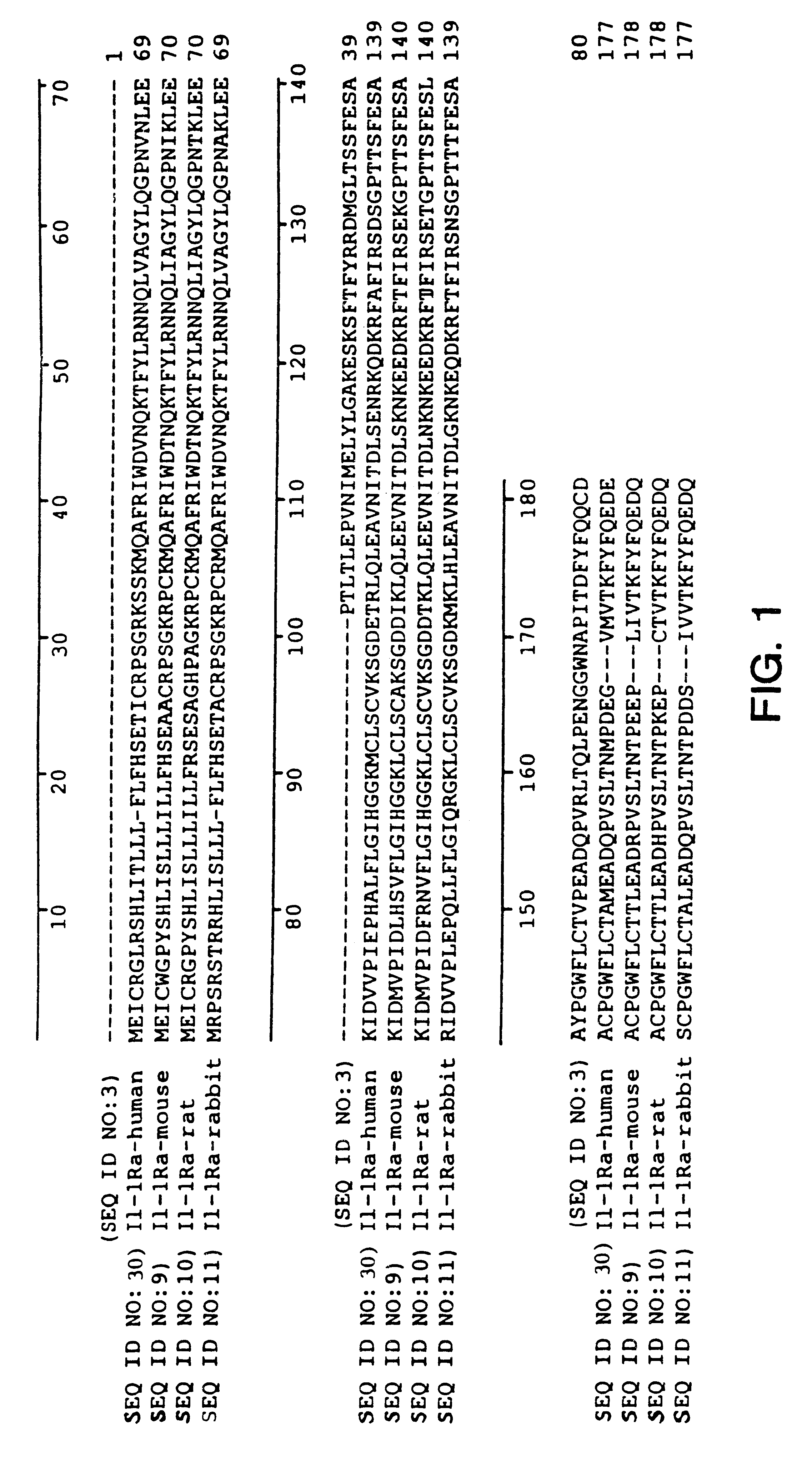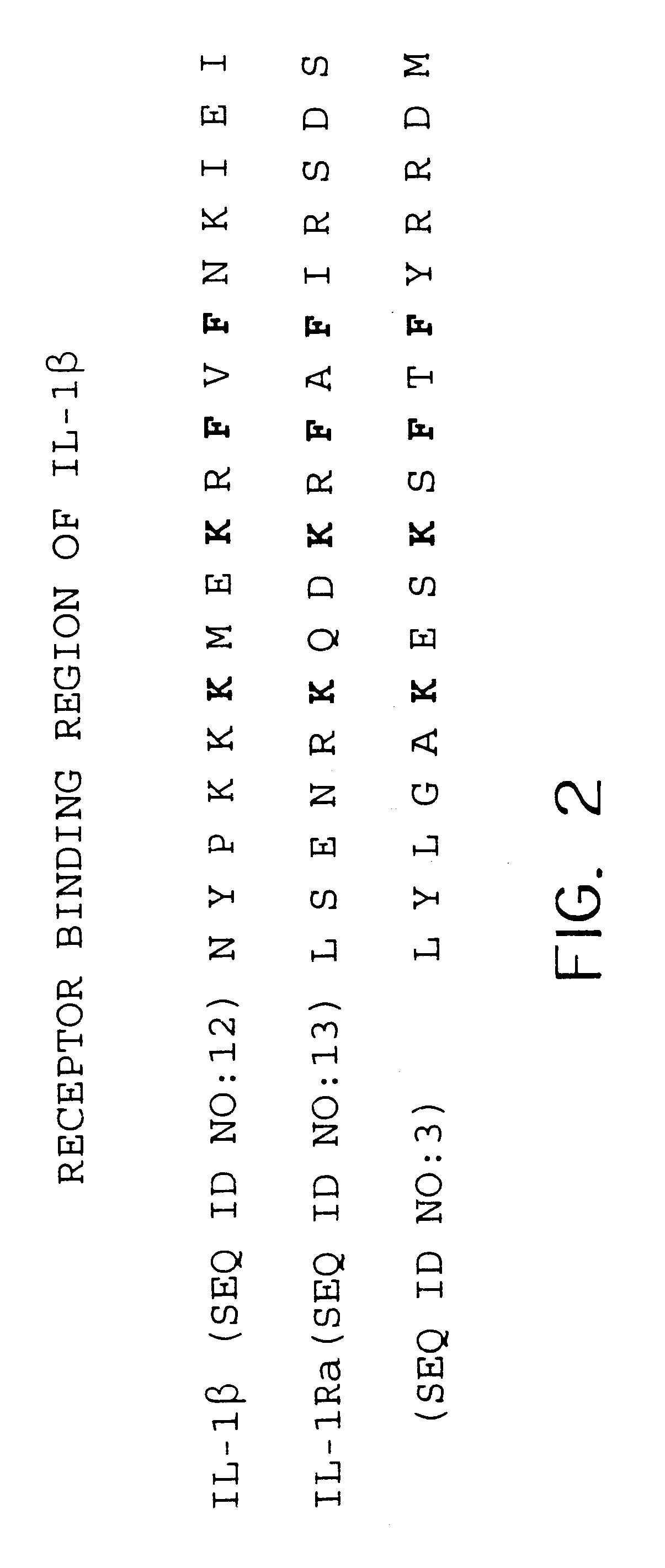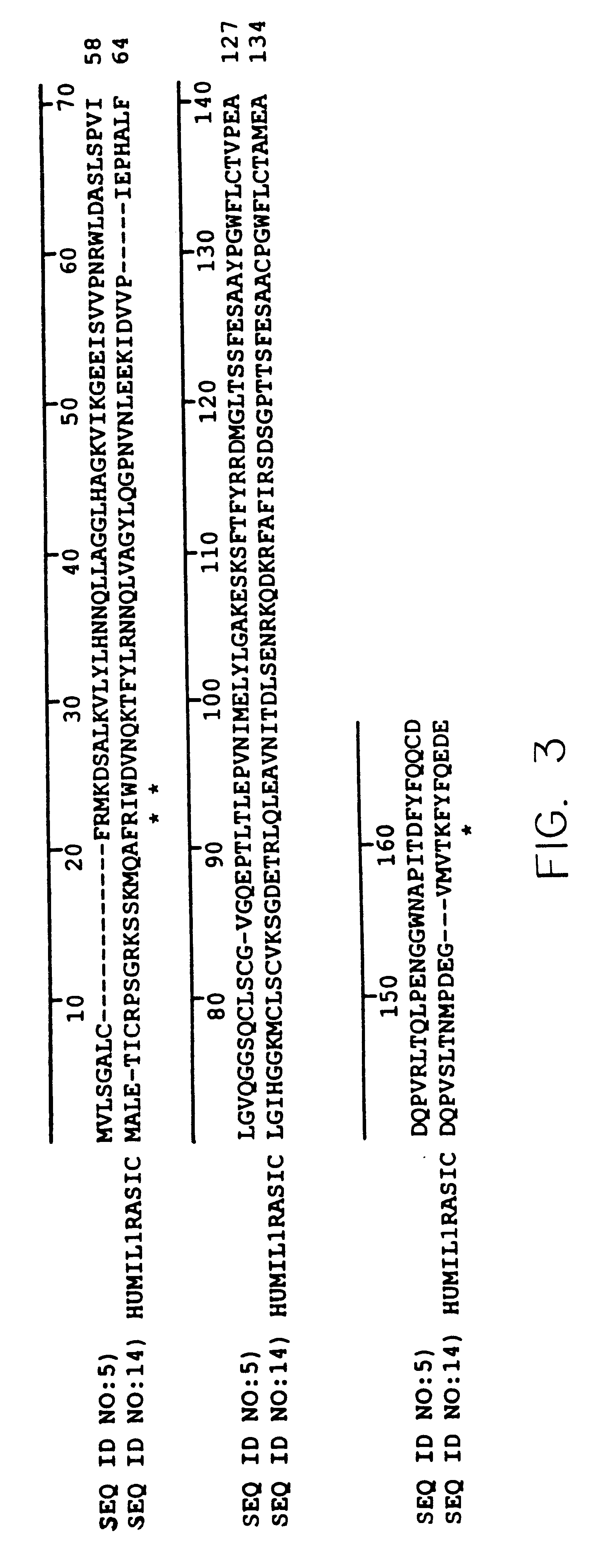Interleukin-1 receptor antagonist and recombinant production thereof
a technology of interleukin-1 receptor and recombinant production, which is applied in the field of polynucleotides and proteins, can solve the problems of tachycardia, hypertension, lung edema, and, eventually, death
- Summary
- Abstract
- Description
- Claims
- Application Information
AI Technical Summary
Benefits of technology
Problems solved by technology
Method used
Image
Examples
example 1
7.1 Example 1
A Novel Interleukin-1 Receptor Antagonist Obtained from a cDNA Library of Fetal Liver-Spleen
A plurality of novel nucleic acids were obtained from the b.sup.2 HFLS20W cDNA library prepared from human fetal liver-spleen tissue, as described in Bonaldo et al., Genome Res. 6:791-806 (1996), using standard pcr, SBH sequence signature analysis and Sanger sequencing techniques. The inserts of the library were amplified with pcr using primers specific for vector sequences which flank the inserts. These samples were spotted onto nylon membranes and interrogated with oligonucleotide probes to give sequence signatures. The clones were clustered into groups of similar or identical sequences, and single representative clones were selected from each group for gel sequencing. The 5' sequence of the amplified inserts was then deduced using the reverse M13 sequencing primer in a typical Sanger sequencing protocol. PCR products were purified and subjected to flourescent dye terminator cy...
example 2
7.2 Example 2
Expression Study Using SEQ ID NO. 2
To study the role of SEQ ID NO. 2 in the regulation of the inflammatory response, gene expression was analyzed using a semi-quantatative polymerase chain reaction-based technique. cDNA libraries were used as sources of expressed genes from tissues of interest (three leukocyte preparations [two stimulated and one unstimulated], heart, lung, spleen, placenta, testes, fetal liver, adult liver, bone marrow, lymph node, macrophages, endothelial cells, fetal skin, and umbilical cord). Gene specific primers were used to amplify portions of the SEQ ID NO. 2 sequence (corresponding to bases 105-772 and 161-690, as numbered from the 5' end of SEQ ID NO. 2) from the samples. Amplified products were separated on an agarose gel, transferred and chemically linked to a nylon filter. The filter was then hybridized with a radioactively labeled (.sup.33 Palpha-dCTP) double-stranded probe generated from the full-length SEQ ID NO. 2 sequence using a Kleno...
example 3
7.3 Example 3
Chromosomal Localization Study Using SEQ ID NO. 2
Chromosome mapping technologies allow investigators to link genes to specific regions of chromosomes. Chromosomal mapping was performed with the Stanford G3 Radiation Hybrid Panel (Research Genetics). The panel was screened with gene-specific primers (5' primer: CCCCACTGGATGGTGCTACTG; (SEQ ID NO. 15), 3' primer: GGGAAGAGATAGGAAAGGTAG) (SEQ ID NO. 16)that generated a sequence tag site (STS), and the results of the PCR screening were submitted to the Stanford Radiation Hybrid mapping email server at the Stanford Human Genome Center (SHGC). The gene position on the radiation hybrid framework map was provided by linking the STS corresponding to SEQ ID NO. 2 with the SHGC marker with best linkage.
The results indicated that SEQ ID NO. 2 is located on the long arm of chromosome 2. The STS was linked to the marker SHGC-7020 with a LOD (log of the odds) score of 12.25 and cR-1 000 of 5, indicating that the STS was within 120 kb (k...
PUM
| Property | Measurement | Unit |
|---|---|---|
| Fraction | aaaaa | aaaaa |
| Fraction | aaaaa | aaaaa |
| Molar density | aaaaa | aaaaa |
Abstract
Description
Claims
Application Information
 Login to View More
Login to View More - R&D
- Intellectual Property
- Life Sciences
- Materials
- Tech Scout
- Unparalleled Data Quality
- Higher Quality Content
- 60% Fewer Hallucinations
Browse by: Latest US Patents, China's latest patents, Technical Efficacy Thesaurus, Application Domain, Technology Topic, Popular Technical Reports.
© 2025 PatSnap. All rights reserved.Legal|Privacy policy|Modern Slavery Act Transparency Statement|Sitemap|About US| Contact US: help@patsnap.com



